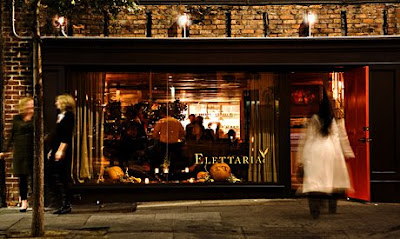
Times are bleak for our slobbery friend, the pig. He just wanted to roll around in some mud, eat a little hay, and, if Babe was accurate, herd a few sheep. He had no intentions of scaring us with a global flu pandemic. But he stands accused of just that.
Revenge against the pig has been swift. Wall Street analysts predict a sharp decline in pork sales. And that would be tame compared to the response in Egypt, where the government ordered every pig in the country slaughtered and burned.
If pigs could do more than oink, I think they would make some sound arguments in their own defense. They’d note that people can’t get swine flu from eating properly cooked pork. In fact, there’s no evidence that people who’ve become sick had any contact with pigs at all.
I would add that I’ve eaten a lot of pork belly over the past month. My strong sense is that I don’t have acute febrile respiratory illness.
If you’re still thinking about swearing off pork, you should consider just how delicious the last month has been.
1. David Chang’s Tonkotsu Soup
About a month ago, I discovered pork belly by accident at David Chang’s Ippudo. I’d read an interview in which Chang, apparently suffering from some self-esteem issues, said that his restaurant serves “crappy pan-Asian ramen made for round-eyes.” As luck would have it, I’m in his target audience, so I figured Ippudo’s popular tonkotsu soup was perfect for me. And I was right, but not because of the noodles, which were average, or even the ramen broth, an excellent emulsion of pure pork and pork fat. What hogged my attention was the pork belly.
So my mistake didn’t earn me any cool points with Chang, but once I tasted the pork belly, I didn’t care. It comes from the pig’s underside, but unlike bacon, they don't cure or smoke it. Instead, it’s usually chopped into thick, square bites and braised in a liquid that ranges from a seasoned stock to soy sauce. Chang’s preparation was precise: slow-cooked to render out just enough fat, so each piece was meaty, but also slightly buttery. At the beginning of the heating process, he’d blasted it to give the surface a crispy, bacon-like crunch. Finally, his braising stock was sweet and smoky. And because of the extra side, multiply all of the above times two.
Egypt, go ahead and slaughter your pigs if you want, but do New York a favor and send them to David Chang.
2. Zac Palaccio’s Pork Belly Sandwiches
It should come as no surprise that when I woke up the next day with my stomach growling, my first thoughts were of pork belly.
I only had to wait until the following weekend for my next taste, but it wasn’t as good. I was in the Meatpacking District at Zac Palaccio’s Malaysian restaurant, Fatty Crab. Vogue calls Zac’s pork belly sandwich a “witty nod to British colonialism.” In other words, they’re tea sandwiches.
But Vogue also says that this dish features an “unctuous chunk of pork belly.” Maybe I took a wrong turn and end up at Skinny Crab? The layers of pork weren’t just thin, they were barely visible, a light streak of white between the grains. I get angry when restaurants try to make the strange textures of novelty foods more palatable to customers by hiding them in bread. And I’m talking to you, Bromberg brothers.
3. Red Cooking with Cheong Liew
I was on the bus back from New York to DC, wondering how I could pursue my passion for Chang’s pork belly with his restaurant over 400 miles away. Like so often when life throws a problem my way, I received guidance and inspiration from OK Magazine. One article offered evidence that Oprah smokes crack to get ready for her show. Her ex-boyfriend says that he used to cook it for her, but when he wasn’t around to provide culinary guidance, she had to learn how to do it on her own.

I found strength in her story and decided I would find a way to reproduce Chang’s pork belly myself. If I could pull it off, my high would be just as exhilarating as Oprah’s.
Like all great chefs, Chang only uses the best ingredients, so my first objective was to get a high-quality cut of pork. I thought about Berkshire, an heirloom breed that offers a cleaner flavor than the typical supermarket pork. But when I asked for Berkshire at Wagshal’s Market, the manager, Pam, examined me with contempt.
“Everyone wants Berkshire,” she growled. “Well, let me tell you something: we’ve tried out pigs from all over the world, from as far away as Spain, including Berkshire.” After years of sampling different suppliers, Wagshal’s eventually concluded that the best-tasting pork came from a small, private farm in Iowa. “The breed doesn’t matter,” Pam said. “It’s all about how you treat the animal.”
The result? Wagshal’s moves 300 pounds of pork belly per month.
Back home with some freshly purchased Sioux City Swine, I wondered about Chang’s cooking methods. I searched pork belly recipes online for hours, but none of them seemed capable of replicating Chang’s masterpiece. Then, I was flipping through my copy of Fat, Jennifer McLagan’s book about “a misunderstood ingredient,” when my eyes fixed on a picture of glistening, reddish-brown, spice-flecked pieces of pork. My pulse quickened. 400 miles felt like four feet. I was back at Ippudo.
I learned with some disappointment that McLagan had borrowed the recipe from Cheong Liew (in foreground, below), not Chang. But then I read that Food & Wine Magazine had chosen Liew one of the “ten hottest chefs alive” – a list Chang probably wasn’t even considered for.

I took my first bite and thought about Christmas in the 1980s. Being a Jew, when I was a kid my family would always go out for Chinese food on Christmas day. Being a bad Jew, I would always order the spare ribs.
That this dish reminded me of the inexpensive cut of breastbone used by a mediocre Chinese restaurant in Nashville doesn’t say much about Wagshal’s Iowa connection. I don’t suggest changing the state slogan to “We Do Amazing Things with Pigs.” And it tasted nothing like Chang’s version: the zest gave the pork belly a distinct, tangy quality. Next time, Pam’s getting me some Berkshire. But Liew’s braising process did make the fatty streaks rich and succulent, and I thank the pig farmers of Iowa for the childhood memories.
4. Korean Pork Belly
After taking down three pounds of Wagshal’s pork belly, I thought it was a good idea to have a week off before pigging out on Berkshire.
But this past weekend I was at Nam Kang, a Korean restaurant in Baltimore, and my friend Erin and I couldn’t pass up the opportunity to get their grilled pork belly. Erin is a grill master, but I was still happy that the waitress hung around our table to helm the portable stove as the pork sizzled. The last time I worked the grill at a Korean restaurant, I received an angry lecture in Korean when a short rib caught on fire.
Koreans like their pork belly sliced thin, so it looked a lot like bacon as the waitress finished the cooking process and scraped the crackling meat from the grill. But the pieces weren’t cured or smoked, and my eating companions found them to be too bland. I was the exception; Korea’s perspective on pork belly worked for me. Following the Korean custom, I happily piled the meat onto lettuce leaves along with chopped garlic and jalapeno pepper, over which I drizzled bean paste (daenjang) and a salty sesame oil sauce. It was interesting to think that the first time David Chang, who is Korean, had pork belly, it probably looked just like this – and yet, the version that he now serves in his restaurant bears almost no resemblance.


As a side note, I enjoyed watching my friend Dave attack Korean comfort food with the same aggression he used to show during college. Living in Manhattan, he’s had many fine dining experiences since his undergrad years, and I wondered whether bim bim bap would still meet his standards for excellence. The action shot below answers that question. His head is blurry from attacking the plate with such force.

Hopefully you won’t let a little thing like the onset of a global pandemic get in between you and the delicious pork belly experiences I’ve described above.



















